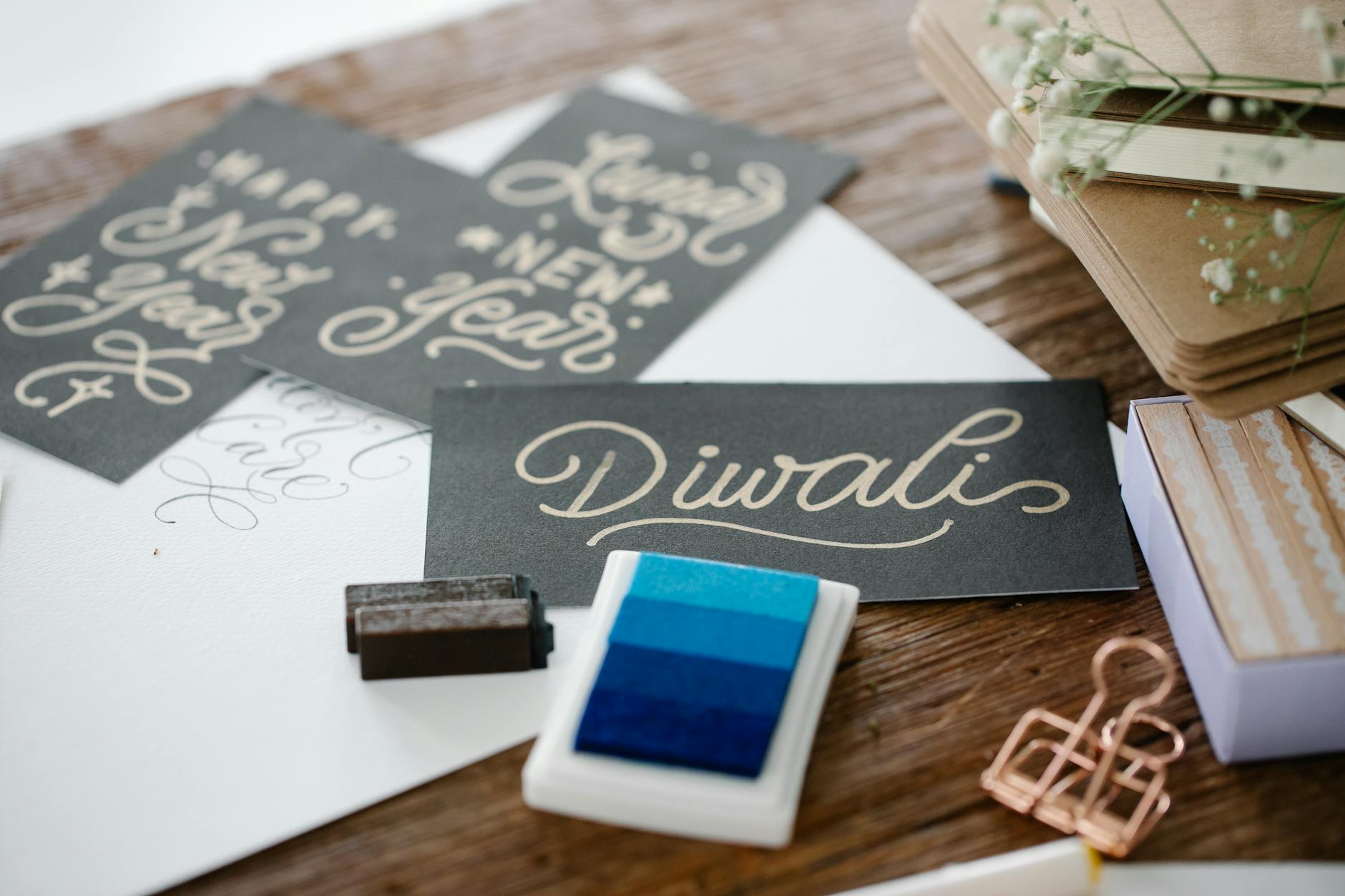Journal Prompt Cards can be a powerful way to breathe new life into old greeting cards. If you’ve ever tucked an old card into a drawer, you already know their magic. Greeting cards hold memories, handwritten notes, and that little spark of connection we don’t get from a screen. It’s easy to toss them, but there’s a better way—turn them into fuel for your journaling sessions instead.
Using greeting cards as journal prompt cards taps into their sentimental value and helps you see old stories with fresh eyes. Instead of buying new stationery, this approach lets you upcycle what you have, making your writing both personal and eco-friendly. Ahead, you’ll find simple, creative ideas to get started and keep your journaling practice feeling meaningful and new.
Why Use Greeting Cards as Journal Prompt Cards
Greeting cards aren’t just pieces of folded paper. They’re packed with images and words that carry emotional weight and nostalgia. When used as journal prompt cards, these cards can act as tiny time capsules, sparking memories, feelings, and stories that might stay locked away otherwise. Before you toss that birthday, thank you, or holiday card, consider how it can help illuminate your next journal entry.

Photo by Antoni Shkraba Studio
Built-in Visual Inspiration
Journal Prompt Cards are a creative way to use the visuals and themes from greeting cards to spark meaningful reflection. Greeting cards often feature striking visuals—from floral watercolor paintings to bold graphic prints. These images can help jumpstart creativity in seconds, especially if you’re feeling stuck or uninspired.
- Color palettes on cards can set a mood for writing.
- Illustrations or photos might remind you of a place, season, or person.
- Design elements often suggest themes—like celebration, comfort, or hope.
Instead of facing a blank page, you’re responding to a piece of art. Journal Prompt Cards can be especially helpful for visual learners or anyone who enjoys pulling inspiration from colors and shapes.
Meaningful Messages Spark Reflection
The written words inside a greeting card, whether heartfelt or humorous, act as gentle nudges for self-reflection and deeper storytelling.
-
- A simple “thinking of you” can lead you to write about someone special.
-
- Holiday wishes might prompt stories about family traditions, food, or past celebrations.
-
- Even corny puns or silly jokes can inspire lighthearted, joyful entries.
These snippets turn the act of journaling into a dialogue—between who you were when you received the card, and who you are now.
Upcycling for Mindful, Sustainable Writing
Reusing greeting cards as prompts gives them a new life and keeps waste down. It’s a small step, but it adds up if you’re journaling regularly.
-
- No need to buy fresh supplies. Old cards have endless reuse potential.
-
- You’re making your writing practice personal and eco-conscious.
-
- Each card rescued from the recycling bin brings a new surprise to your session.
This upcycling approach fits right in if you value sustainability and want to make your creative routine more thoughtful.
Emotional Connection and Keepsake Value
Greeting cards are often kept because they mean something. When they show up in your journal, they add a tangible history to your writing.
-
- Cards with a loved one’s handwriting open emotional doors you might forget.
-
- They can mark moments of change—like birthdays, moves, or big life events.
-
- Using them in your journal helps preserve both the message and the memories behind it.
There’s a comfort in handling something real, worn, and loved, especially in a world that’s more digital every year. Cards can bring back voices and faces in an instant.
Using greeting cards this way goes beyond recycling. It builds a bridge between your past and present and turns every journal entry into a mini keepsake.
Transforming Greeting Cards Into Personalized journal prompt cards
Journal Prompt Cards aren’t just for a single occasion. Greeting cards hold color, warmth, and words that capture moments in time. With a little creativity, you can turn any old card into a fresh journal prompt cards. Whether you’re drawn to a quirky sketch, a heartfelt message, or a card from someone special, these simple strategies make each greeting card a springboard for deeper self-expression.
Cutting and Collaging for Visual Inspiration

Photo by Katya Wolf
Don’t limit yourself to words—let your journaling style speak through visuals. Greeting cards are packed with design elements that can instantly energize a blank page.
-
- Images & Illustrations: Cut out shapes, flowers, animals, or patterns. Paste them straight into your journal or mix with magazine clippings, stickers, and your own doodles.
-
- Color Swatches: Isolate blocks of color or color blends from a card. Use these as the inspiration for a mood, or to guide your pen or paint choices for a session.
-
- Textures & Finishes: Some cards include raised embossing, glitter, or foil. Glue these pieces in and let the tactile feel add another layer to your creative process.
-
- Layered Collage: Build a visual story—layer images and shapes from several cards to create a scene, a vision board, or simply to add energy to a written entry.
This approach works especially well for visual learners or anyone who finds that drawing helps unlock words and feelings. Your journal becomes part scrapbook, part sketchbook, and a whole lot more fun.
Extracting and Curating Written Prompts
The right words can linger for years. Greeting cards are full of memorable messages, punchlines, and single phrases that make perfect prompts.
-
- Highlight a Phrase: Select a line or word that stands out. Tape or washi-tape it onto your page, then free-write in response.
-
- Cut and Combine: Snip out several short phrases, greetings, or wishes from multiple cards. Shuffle them together or choose one at random to start your journaling entry.
-
- Prompt Jar: Chop up messages into strips and place them in a jar or envelope. Anytime you feel stuck, draw one and use it as your writing spark.
-
- “If Only” Spin: Take a typical greeting (“Wishing you happiness”) and finish the sentence your own way (“…looks different for me when…”).
By curating these snippets, you let someone else’s words guide you to your own voice. This method works well for gratitude journaling, reflective writing, or even when you want to add humor to your day.
Using Sentimental Value to Spark Reflection
A greeting card is never just paper. It’s a vessel for memories, emotions, and connections.
-
- Write About the Giver: Describe who sent you the card. What’s your relationship with them like? When did you last see or speak to them?
-
- Remember the Occasion: Capture why the card arrived—was it for a birthday, a tough time, or a new adventure? Revisit what you felt when you first received it.
-
- Honor Emotions: Cards often surface feelings—grief, joy, gratitude, or longing. Let yourself write about what that card stirs up now, even if your feelings have changed.
-
- Track Changes Over Time: Re-read an older card and reflect on how things are different today. What have you learned since then?
This style of writing turns your journal into a living memory box. It helps you hold onto what matters and see how far you’ve come, one card at a time.
Creative Journal Prompt Cards Exercises with Greeting Card Prompts
Journal Prompt Cards already carry meaning—now, you can use them to spark deeper self-discovery. With a few targeted exercises, journal prompt cards become more than keepsakes; they transform into catalysts for growth, gratitude, storytelling, and emotional clarity. Below are ready-to-use journaling exercises tailored to common greeting card themes. Each prompt is simple, practical, and encourages honest reflection in your journal.
Gratitude and Affirmation Journaling
Take a greeting card that made you smile—maybe it’s filled with kind words, good wishes, or a compliment from a close friend. Use these cues to anchor your next gratitude or affirmation entry.
-
- Gratitude List Inspired by Card Wishes
Reread the wishes inside the card. Make a list of three things in your life right now that fit those wishes. Did a card wish you peace or laughter? Find moments, big or small, when you’ve experienced them lately.
- Gratitude List Inspired by Card Wishes
-
- Affirmations from Compliments
If a card says, “You’re always there for me,” turn that into a personal affirmation.
Write: “I am supportive and reliable.” Add two more affirmations inspired by the card’s message.
- Affirmations from Compliments
-
- Rewrite the Wish for Yourself
Take the main line from the card (“Wishing you joy”) and turn it into a journal prompt cards:
“How can I bring more joy into my day?” List three ideas, no matter how simple.
- Rewrite the Wish for Yourself
These exercises help you tune in to what’s good in your life and remind you of your strengths—straight from the words of people who care about you.
Storytelling and Memory Exploration
Greeting cards often arrive at important moments. Use that context, or even the artwork on the front, to kick off some memory-rich or imaginative writing.
 Photo by Leeloo The First
Photo by Leeloo The First
-
- Recount the Story of the Card
Who sent the card? For what occasion? Describe where you were when you received it.
Write about what was happening in your life and how that moment felt.
- Recount the Story of the Card
-
- Invent a Narrative from the Card’s Imagery
Look at the card’s picture. What does it remind you of?
Let your imagination run—write a short story or scene starring a character inspired by the image. If there’s a rainbow, maybe your story follows someone chasing hope after a storm.
- Invent a Narrative from the Card’s Imagery
-
- Write From Another Perspective
Imagine you are the person who wrote the card, or perhaps even the card itself.
What would you say or hope for the recipient? This exercise grows empathy and lets you see connections from a new angle.
- Write From Another Perspective
These prompts are great for pulling memories out of storage or jumpstarting your creative writing practice. The mix of real history and playful fiction keeps journaling lively.
Mindfulness and Emotional Processing
Greeting cards tug at real feelings. Use them to help slow down and process emotions—good or hard.
-
- What Did the Card Trigger?
Pause and notice what feelings come up as you look at the card. Do you feel warmth? Maybe sadness or nostalgia?
Write a few sentences describing those feelings with as much detail as you can.
- What Did the Card Trigger?
-
- Mindful Observation Exercise
Study a card’s image and describe every color, texture, or symbol.
Write what each feature makes you think or feel without judgment. This helps you stay present and grounded.
- Mindful Observation Exercise
-
- Let Go or Hold On
Is there something about the message that makes you want to move forward, or maybe hold onto a memory?
Free-write about what you want to let go (fear, anger) or what you want to keep close (kind words, hope).
- Let Go or Hold On
-
- Breathe and Respond
After reading the card, take three deep breaths.
Write about what’s different—has your mood shifted? Did any thoughts become clearer?
- Breathe and Respond
Using greeting cards as mindfulness cues keeps journaling gentle and grounded. It’s a simple way to notice what’s beneath the surface and give those feelings some space to be understood.
Group Activities and Community-Building with Greeting Card Prompts
Journal Prompt Cards make a natural bridge for group connection. When used as creative prompts in workshops, support groups, or clubs, journal prompt cards spark conversation and help people see each other in new ways. Whether you’re using hand-crafted prompts or letting members draw cards at random, these simple activities can shift group energy, encourage sharing, and turn strangers into collaborators.
Prompt Card Swaps and Collaborative Journaling

Photo by Artem Podrez
A card swap is easy to set up and always full of surprises. Each participant brings a greeting card, or even makes one from scratch. The card can have a question, quote, or image meant to spark thought. These cards get mixed in a pile, then everyone draws one at random.
-
- Exchange of ideas: Swapping mixes up viewpoints. You get the chance to write about themes or memories you may not have chosen yourself.
-
- Partner journaling: People can pair up and respond to the prompt together, then share their entries with the group. This often leads to laughter, deeper connections, and “me too” moments—especially in support groups where trust matters.
-
- Group collab journals: Use a shared notebook. After drawing a card, each person adds their own response or drawing to a group entry. By the end, you’ll have a patchwork of voices and experiences—a collective story.
These swaps work for all ages and settings. In classrooms, they build literacy and empathy. In adult workshops or mental health groups, they open doors to honest dialogue. No two journals will turn out alike, and that’s the real magic.
Game-Like Creativity Challenges
Sometimes the best ideas come when you least expect them. Drawing greeting card prompts at random makes the process feel more like play than work. This approach takes the pressure off and keeps energy high, especially in large groups or creative clubs.
-
- Prompt draw games: Place a stack of cards face-down. Each person or team draws one and has five minutes to write or create something—no overthinking allowed.
-
- Round robin stories: Start a story using your prompt, then pass your page to the next person, who adds on based on their own card. Keep passing until you’ve built a whole (and often hilarious) story together.
-
- Art + writing mashups: Pair cards with art supplies. After reading the prompt, everyone spends a set time drawing, painting, or collaging alongside their writing. Sharing finished pieces adds another layer of fun and pride.
-
- Theme nights: Choose a theme (like “gratitude,” “adventure,” or “change”), then use greeting cards that fit the topic for all prompts during the session.
Game challenges break down barriers and help even shy members join in. They’re perfect icebreakers for new clubs or workshops, and they keep seasoned groups from getting stale. The mix of randomness and rapid response means every session feels fresh and full of possibility.
Group prompt activities make journaling social, not just solo. They give every voice a place at the table, building community one card at a time.
Sustainable Artistry: Eco-Conscious Upcycling of Greeting Cards
Turning greeting cards into journal prompt cards goes hand-in-hand with living more sustainably. Instead of buying new supplies and creating extra waste, you transform something sentimental into something useful, one card at a time. This section spotlights the environmental benefits of upcycling greeting cards and offers practical, mindful ways to source and repurpose them for your creative practice.

Photo by Magda Ehlers
Environmental Value of Reusing Greeting Cards
Each reused card keeps material out of the trash and lessens the demand for new products. Most greeting cards are made from paper, a renewable resource, but only if managed well. By upcycling, you help:
-
- Cut Waste: Every card you save from the landfill or recycling bin reduces your footprint.
-
- Save Energy and Water: Manufacturing new cards—even recycled ones—uses resources. Reusing cards skips this step entirely.
-
- Support Forest Conservation: Fewer new cards means less demand for freshly harvested paper, which helps protect forests and all the life they support.
Sustainable upcycling also means watching for extra decorations. Glitter, plastic gems, ribbons, and metallic finishes can make cards hard to recycle later, so removing these pieces before reusing the paper is a smart step.
Practical Tips for Sourcing Greeting Cards to Upcycle
You don’t need to wait for the next birthday to gather cards for your journal prompt cards. Keeping your supply eco-friendly and creative is easy with a few simple habits.
-
- Save All Incoming Cards: Birthdays, anniversaries, and holidays fill your mailbox with possibilities. Tuck them in a drawer or file so they don’t get lost.
-
- Ask Friends and Family: Let your circle know you’re giving cards a second life. Many people are happy to share rather than toss theirs.
-
- Check Community Groups: Swap or freecycle groups sometimes collect used cards, especially after holiday seasons.
-
- Visit Thrift Stores or Charity Shops: Some stores carry packs of unsent cards or even boxes of used cards, perfect for upcycling.
-
- Pick Clean, Simple Designs: Cards without too many glued or metallic decorations are easiest to repurpose and keep eco-friendly.
-
- Remove Embellishments: Peel off stickers, gems, or ribbons before storing cards. Save these odds and ends for a separate creative project if they inspire you.
If you plan to share or sell upcycled artwork, remember to use only original fronts or snippets—don’t try to make exact reproductions due to possible copyright issues. For personal journals, cutting, layering, or collaging small sections is both legal and mindful.
Making Mindful Art From Salvaged Supplies
Choosing upcycling honors both creativity and the environment. Each card you reuse carries a piece of history—and gives you the opportunity to reflect on waste, gratitude, and resourcefulness.
-
- Set a Mini-Challenge: Limit yourself to only upcycled pieces for a week or a month. Notice how this makes you rethink your materials and write more intentionally.
-
- Combine With Other Scraps: Don’t stop at cards. Include bits of envelopes, packaging, or even magazine cutouts for fresh inspiration.
-
- Reflect as You Create: As you glue or write, think about the story of the paper in your hands. It once carried a message, and now it becomes part of yours.
Upcycling greeting cards turns journaling into a double act of care—for the earth and for your memories. Each reused card is a small act of environmental kindness wrapped inside creative self-expression.
Conclusion
Greeting cards offer more than memories—they can unlock new layers in your journaling practice, from creative thinking to emotional healing. You get the power of nostalgia, the spark of original art, and the push to write when words won’t come on their own. Upcycling cards turns everyday items into fresh prompts and keeps your process sustainable.
Try it for a week: pick a card, tape a piece of it onto your journal page, and see where your thoughts go. Let the images, colors, and kind words guide you—no rules, no pressure. Your journal will grow richer, and you just might discover a new favorite way to write.
Share your ideas, photos, or favorite results in the comments or on social. The best inspiration often comes from seeing what others create. Thanks for reading—and happy journaling!


